Weird reptiles include the bizarre Armadillo girdled lizard, with its plated skin and unusual defense mechanism; the Asian giant softshell turtle, a huge turtle with a soft shell; flying geckos and flying snakes, both of which have evolved the ability to glide; and the marine iguana, which, unusually for a reptile, forages at sea.
On this page you’ll meet the above and many other examples of weird reptiles from all around the world.
Weird Reptiles
You can see more weird species on the following pages:
Weird Animals Pictures & Facts
Weird Birds Pictures & Facts
Weird Fish Pictures & Facts
Weird Insects Pictures & Facts
Weird Mammals Pictures & Facts
Weird Sea Creatures Pictures & Facts
Weird Plants Pictures & Facts
Ugly Animals Pictures & Facts
Discover More About Animals
Animals – The Ultimate Guide
Insects – The Ultimate Guide
Armadillo Girdled Lizard
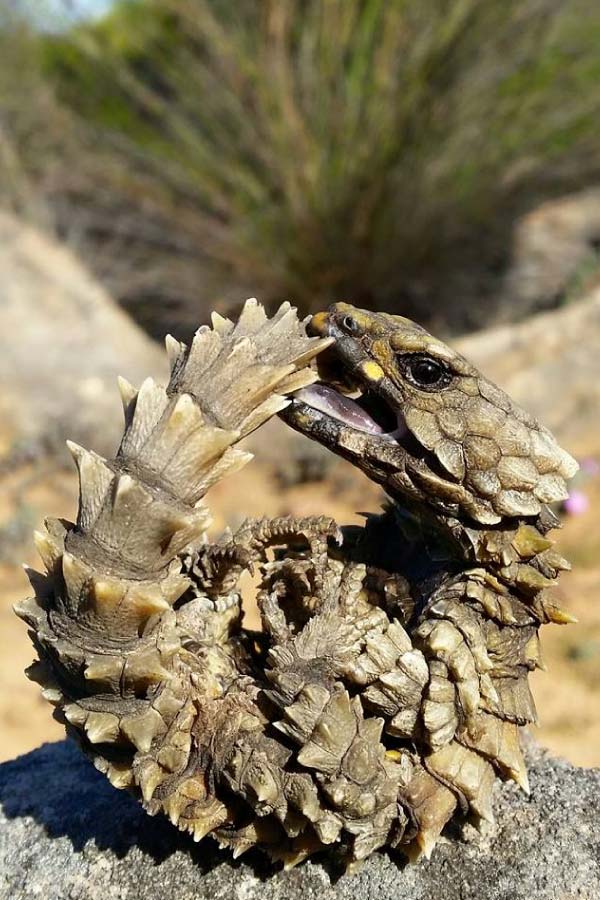
Scientific name: Ouroborus cataphractus
Family: Cordylidae
Continent: Africa (specifically, South Africa)
IUCN conservation status: Near Threatened
Description: Native to South Africa, this weird lizard is known for its unique defense mechanism of rolling into a ball and biting its tail. In doing so, it resembles the ancient “Ourobouros” symbol, which is reflected in the species’ scientific name. The armadillo girdled lizard primarily feeds on small invertebrates. It is one of the few lizards that gives birth to live young (instead of laying eggs).
Discover More With Active Wild
You can see more African reptiles on this page: African Reptiles
Discover different types of lizards on this page: Types of Lizards
Asian Giant Softshell Turtle

Scientific name: Pelochelys cantorii
Family: Trionychidae
Continent: Asia (Southeast Asia)
IUCN conservation status: Critically Endangered
Description: Found in Southeast Asia, this freshwater turtle is one of the largest softshell turtles, and, like other softshell turtles, has a flattened, leathery carapace. It is primarily a carnivore, consuming fish, crustaceans, and mollusks. This odd-looking turtle is critically endangered due to habitat loss and overhunting for its meat.
Discover More With Active Wild
You can see more Asian animals on this page: Asian Animals
Discover different types of turtles on this page: Types of Turtles
You can see more critically endangered animals on this page: Critically Endangered Species
Blue-Tongued Skinks
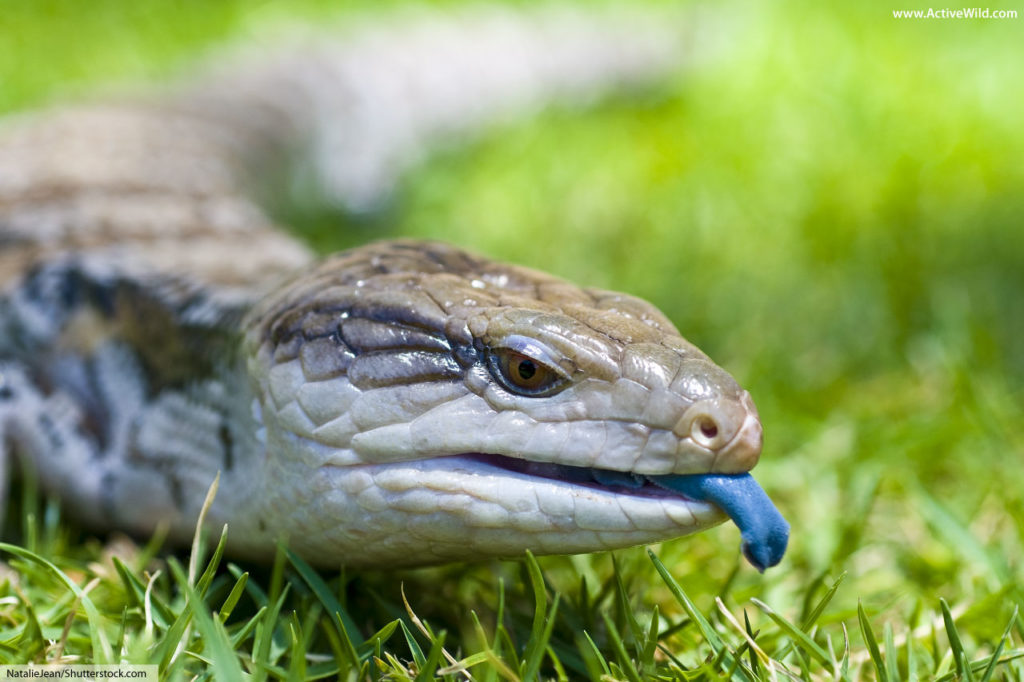
Scientific name: Tiliqua spp.
Family: Scincidae
Continent: Australia
IUCN conservation status: Varies by species
Description: Native to Australia, these striking reptiles are known for their vivid blue tongues, which are flashed at potential predators as form of “startle display” (the sight of the lizard’s blue tongue may startle the predator, allowing the lizard to escape). Blue-tongued skinks are omnivorous, feeding on a variety of plant material, insects, and small animals.
Discover More With Active Wild
Discover different types of lizards on this page: Types of Lizards
You can see more Australian reptiles on this page: Australian Reptiles
Chinese Crocodile Lizard
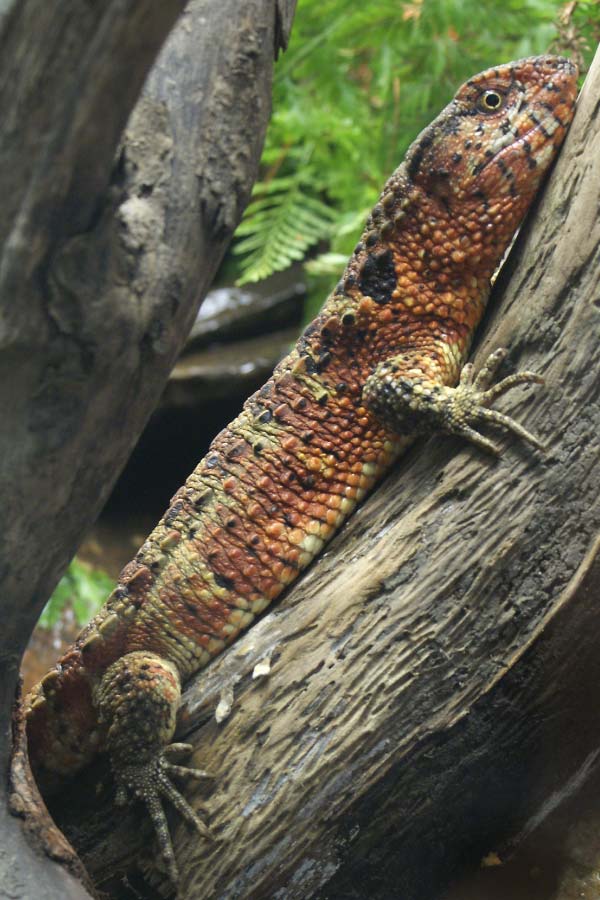
Scientific name: Shinisaurus crocodilurus
Family: Shinisauridae
Continent: Asia (specifically, China and Vietnam)
IUCN conservation status: Endangered
Description: Found in China and Vietnam, this semi-aquatic lizard has a distinctive appearance, with keeled scales along its back and tail resembling those of a crocodile. It feeds on a variety of insects, invertebrates, and small fish. This weird lizard is endangered due to habitat loss and being hunted for sale to the pet trade.
Discover More With Active Wild
Discover different types of lizards on this page: Types of Lizards
Flying Geckos
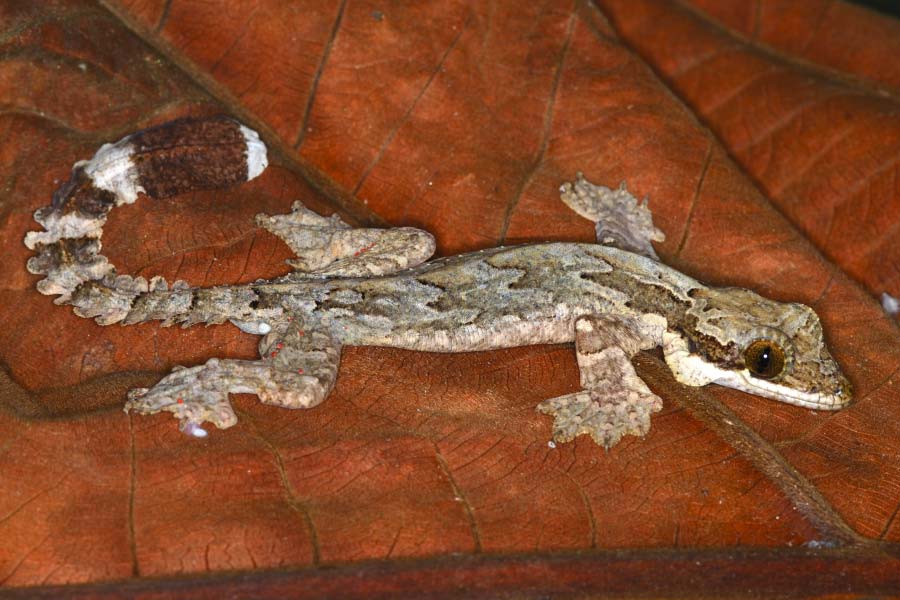
Scientific name: Gekko spp. (several species of flying geckos)
Family: Gekkonidae
Continent: Asia (Southeast Asia)
Description: Native to Southeast Asia, these arboreal (tree-dwelling) geckos have specialized adaptations, including skin flaps and webbed feet, that allow them to glide short distances between trees. They primarily feed on insects and other small invertebrates.
Discover More With Active Wild
Discover different types of lizards on this page: Types of Lizards
You can see more Asian animals on this page: Asian Animals
Frilled Lizard / Frill-Necked Lizard
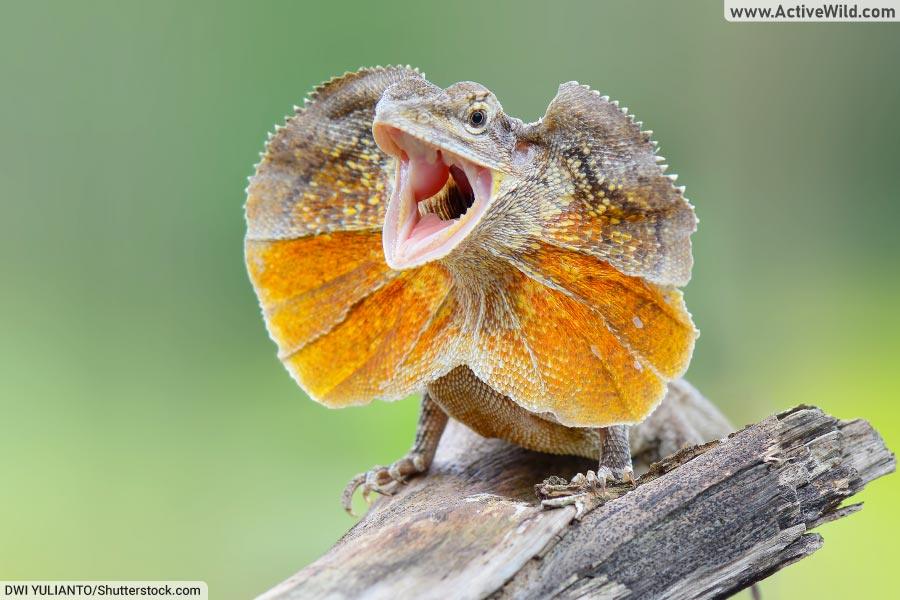
Scientific name: Chlamydosaurus kingii
Family: Agamidae
Continent: Australia
IUCN conservation status: Least Concern
Description: Native to Australia, this lizard is known for its large, frill-like collar that it can extend to intimidate predators or attract mates. The species’ bizarre appearance was the inspiration for the Dilophosaurus dinosaur in the film Jurassic Park (there is no evidence that the real Dilophosaurus had a neck frill). The frill-necked lizard feeds mainly on insects and small vertebrates.
Discover More With Active Wild
You can find out more about this reptile on this page: Frill-Necked Lizard Facts
You can see more Australian reptiles on this page: Australian Reptiles
You can find out more about Dilophosaurus on this page: Dilophosaurus Facts
Gharial
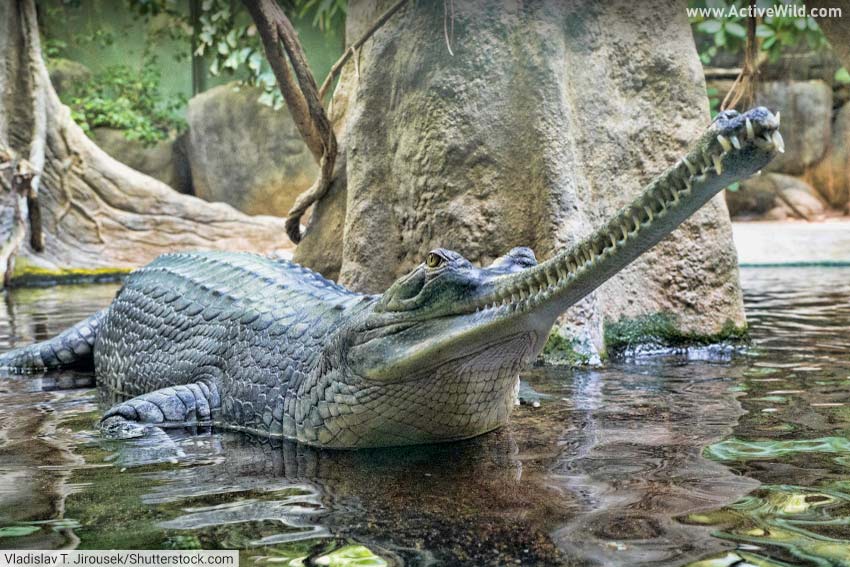
Scientific name: Gavialis gangeticus
Family: Gavialidae
Continent: Asia (Indian subcontinent)
IUCN conservation status: Critically Endangered
Description: Found in the Indian subcontinent, the gharial is a large, fish-eating crocodilian with a long, narrow snout filled with sharp teeth. It inhabits freshwater rivers, feeding primarily on fish.
Discover More With Active Wild
You can find out more about this weird reptile on this page: Gharial Facts
You can see more Asian animals on this page: Asian Animals
You can see more critically endangered animals on this page: Critically Endangered Species
Green Basilisk / Common Basilisk Lizard
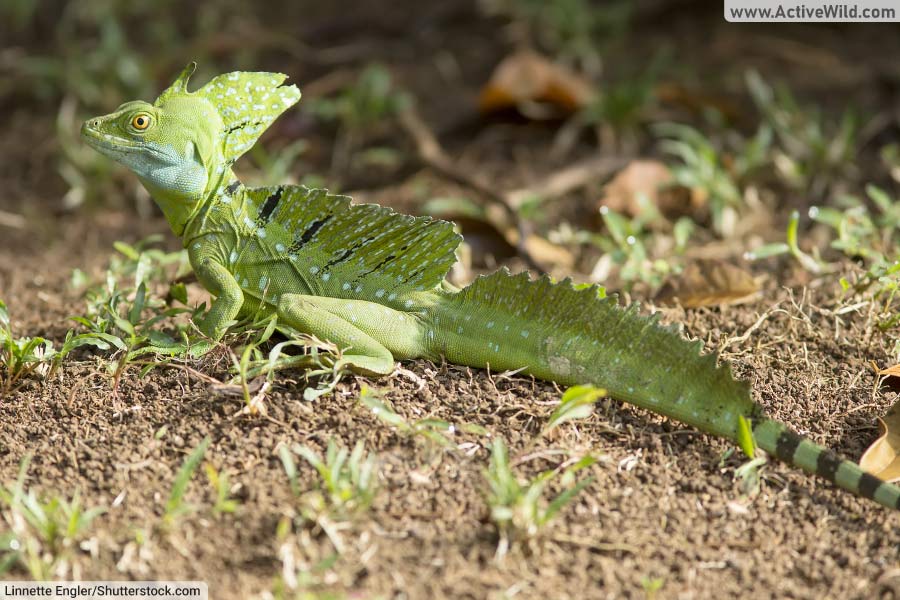
Scientific name: Basiliscus plumifrons
Family: Corytophanidae
Continent: Central America
IUCN conservation status: Least Concern
Description: Native to Central America, this striking-looking lizard is also known as the “Jesus Christ lizard” due to its amazing ability to run on water. It is an omnivore, feeding on insects, small vertebrates, and plant material.
Discover More With Active Wild
Discover different types of lizards on this page: Types of Lizards
Horned Lizards
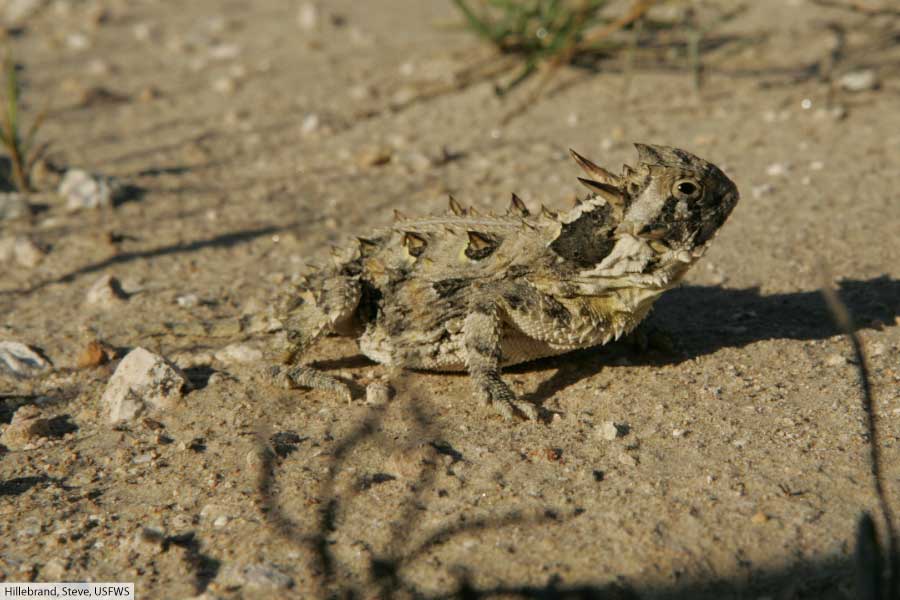
Scientific name: Phrynosoma spp.
Family: Phrynosomatidae
Continent: North America
IUCN conservation status: Varies by species
Description: Despite also being known as horny toads, horned lizards are reptiles with a flattened, toad-like appearance and spiny projections on their bodies. They primarily feed on ants and other small insects. Some species of horned toads have the weird ability to shoot a stream of blood from the corners of their eyes – an adaptation for escaping from a potential predator.
Discover More With Active Wild
Discover different types of lizards on this page: Types of Lizards
Discover different types of reptiles on this page: Types of Reptiles
Malagasy Leaf-Nosed Snake
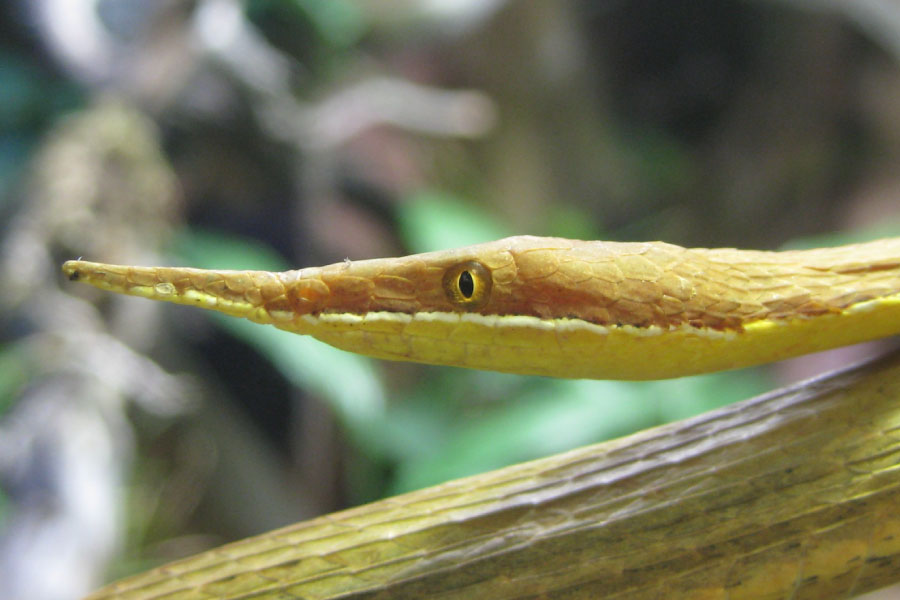
Scientific name: Langaha madagascariensis
Family: Colubridae
Continent: Africa (specifically, Madagascar)
IUCN conservation status: Least Concern
Description: Native to Madagascar, this snake is known for its unique, leaf-shaped snout, the exact function of which, apart from camouflage, remains a mystery to biologists. This bizarre reptile feeds on lizards and other small vertebrates, using its camouflage to ambush prey.
Discover More With Active Wild
You can see more African reptiles on this page: African Reptiles
Marine Iguana
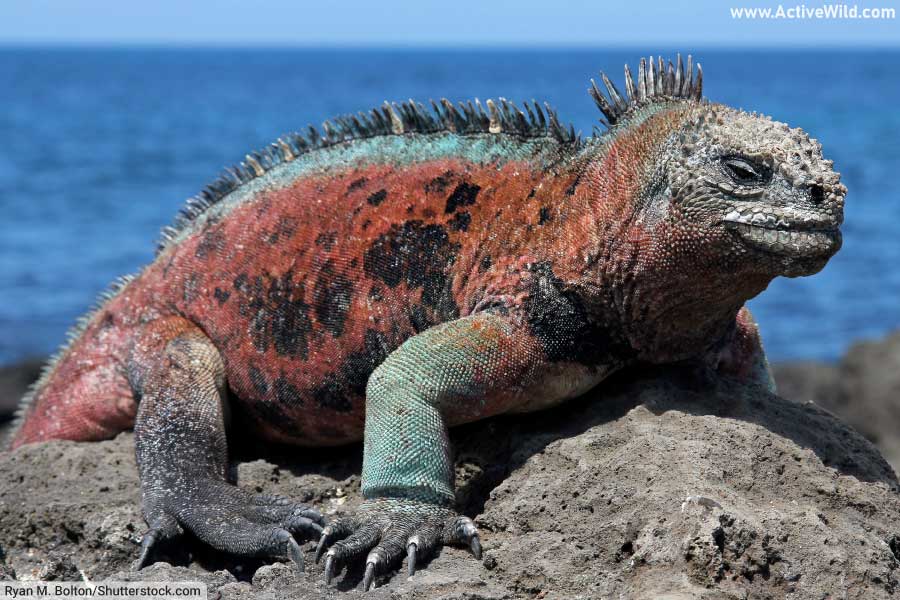
Scientific name: Amblyrhynchus cristatus
Family: Iguanidae
Continent: South America (specifically, the Galápagos Islands)
IUCN conservation status: Vulnerable
Description: Found only on the Galápagos Islands, the marine iguana is the only lizard that feeds in the ocean, primarily consuming algae. It has specialized adaptations, such as a blunt snout and strong limbs, to help it forage in the water. The marine iguana is one of many weird and wonderful animals found only on the remote island group.
Discover More With Active Wild
Discover different types of lizards on this page: Types of Lizards
You can see more South American animals on this page: South American Animals
Mary River Turtle
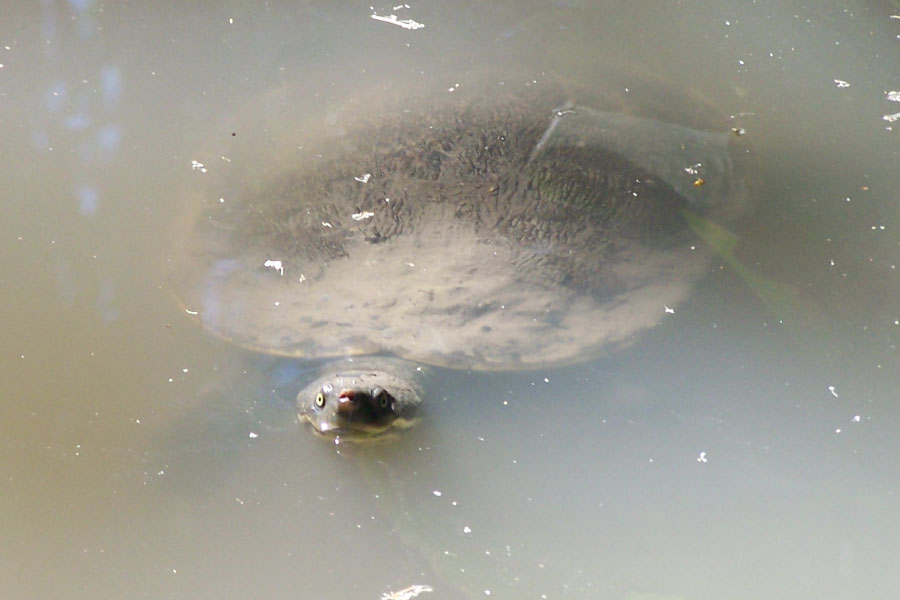
Scientific name: Elusor macrurus
Family: Chelidae
Continent: Australia
IUCN conservation status: Endangered
Description: Native to Australia’s Mary River, this freshwater turtle is known for its algae-covered shell and head, which give it the alternative name of “punk turtle”. The species is able to breathe via specialized glands in its cloaca (an opening on the turtle’s underside), allowing to stay underwater for several days (the species also breathes in the normal way). An omnivore, the Mary River turtle feeds on a variety of plant material, insects, and mollusks.
Discover More With Active Wild
Discover different types of turtles on this page: Types of Turtles
You can see more endangered animals on this page: Endangered Animals
Mata Mata
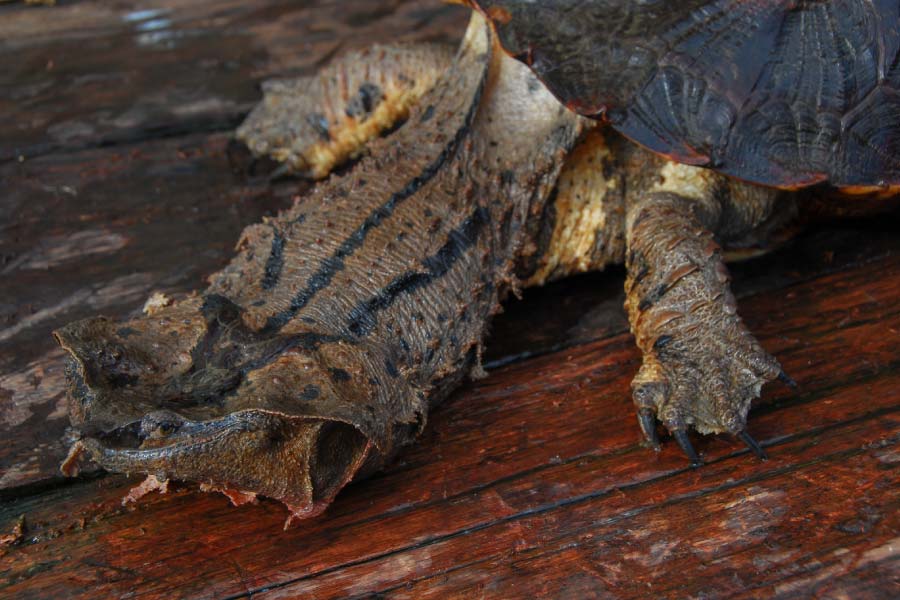
Scientific name: Chelus fimbriatus
Family: Chelidae
Continent: South America
IUCN conservation status: Not Evaluated
Description: Found in South America, the mata mata is a freshwater turtle with a flattened, leaf-like head, spiked snout, and a rough, bark-like shell. The turtle’s freaky appearance serves as camouflage for this ambush predator, which feeds on fish and other aquatic creatures.
Discover More With Active Wild
Discover different types of turtles on this page: Types of Turtles
You can see more South American animals on this page: South American Animals
Ornate Flying Snake
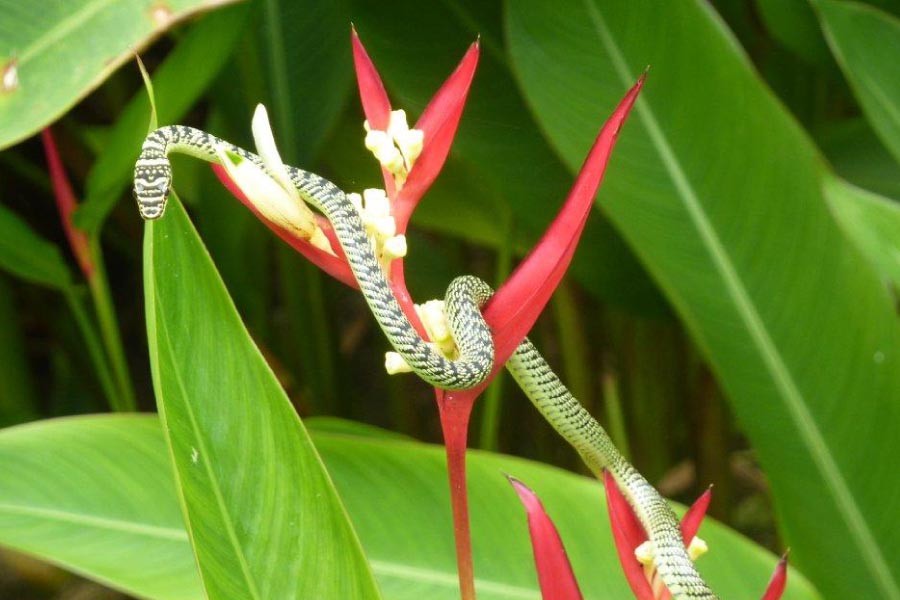
Scientific name: Chrysopelea ornata
Family: Colubridae
Continent: Asia
IUCN conservation status: Least Concern
Description: Native to Asia, this weird snake is capable of gliding through the air by flattening its body and undulating to generate lift. It is primarily arboreal (tree-dwelling) and feeds on small vertebrates, such as lizards and rodents.
Discover More With Active Wild
You can find out more about snakes on this page: Snake Facts
Discover different types of snakes on this page: Types of Snakes
Pig-Nosed Turtle
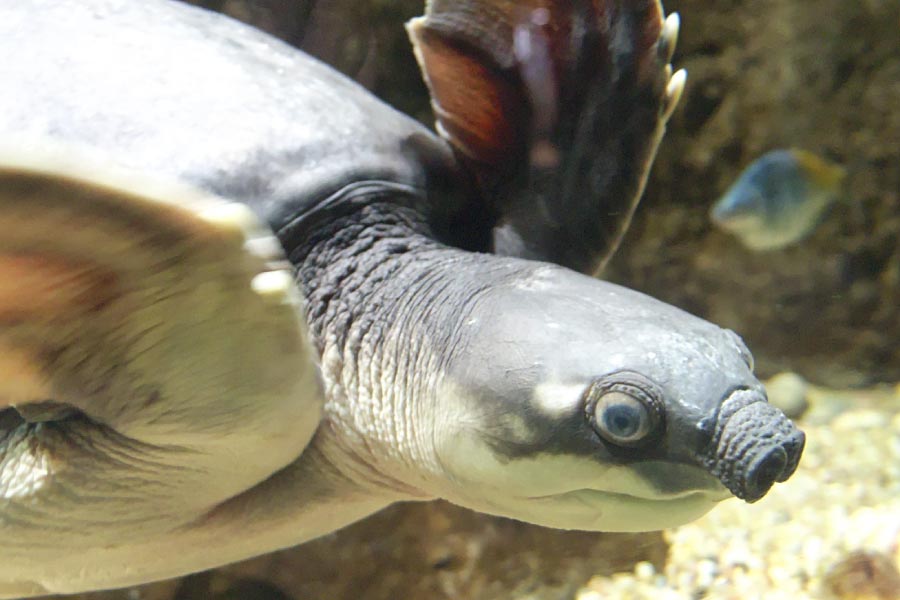
Scientific name: Carettochelys insculpta
Family: Carettochelyidae
Continent: Oceania (Australia and New Guinea)
IUCN conservation status: Endangered
Description: Found in Australia and New Guinea, this freshwater turtle has a distinctive pig-like snout, which functions as a snorkel when the animal is underwater. Also unique among freshwater turtles are the species’ flipper-like feet. This weird Australian reptile is omnivorous, feeding on both plant material and small aquatic animals.
Discover More With Active Wild
Discover different types of turtles on this page: Types of Turtles
You can see more Australian reptiles on this page: Australian Reptiles
Satanic Leaf-Tailed Gecko
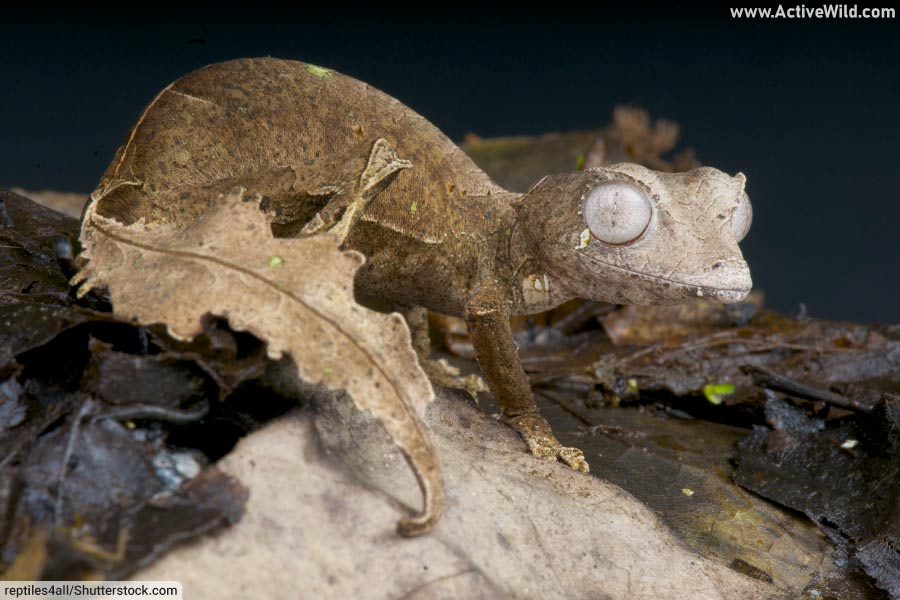
Scientific name: Uroplatus phantasticus
Family: Gekkonidae
Continent: Africa (specifically, Madagascar)
IUCN conservation status: Least Concern
Description: Found only on the African island-country Madagascar, this gecko is known for its remarkable leaf-like appearance and cryptic coloration, which provide excellent camouflage. It primarily feeds on insects and other small invertebrates. Like other geckos, it lacks eyelids, and has to clean its eyes with its tongue.
Discover More With Active Wild
Discover different types of lizards on this page: Types of Lizards
You can see more African reptiles on this page: African Reptiles
Slow Worm
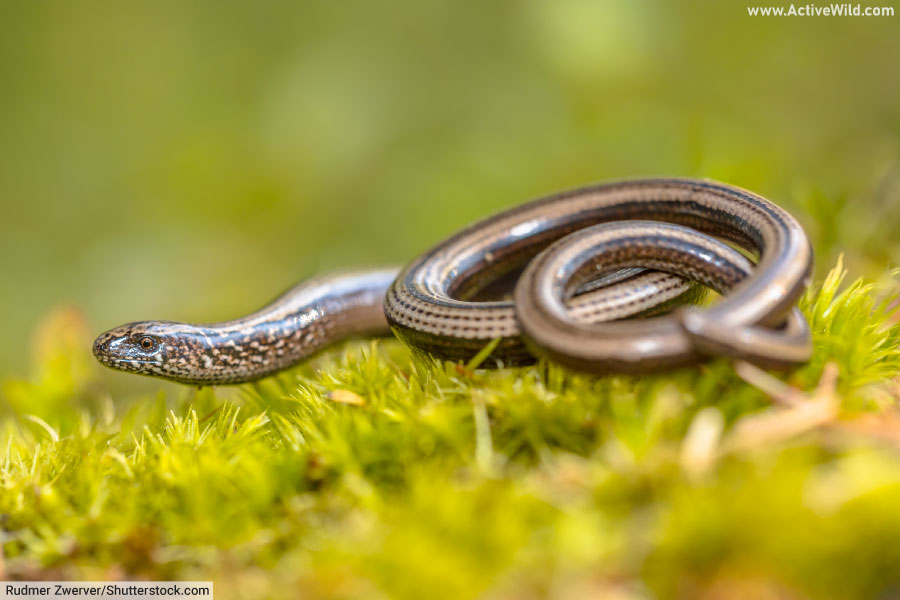
Scientific name: Anguis fragilis
Family: Anguidae
Continent: Europe and Asia
IUCN conservation status: Least Concern
Description: Despite its snake-like appearance, the slow worm is actually a lizard, one of several “legless lizards” found around the world. Close inspection will reveal that the slow worm has eyelids and external ear-openings – both of which are not present in snakes. The slow worm is a carnivore, feeding on slugs, snails, and other invertebrates. It inhabits gardens and grasslands.
Discover More With Active Wild
Discover different types of lizards on this page: Types of Lizards
You can see more European animals on this page: European Animals
Spiny Bush Viper
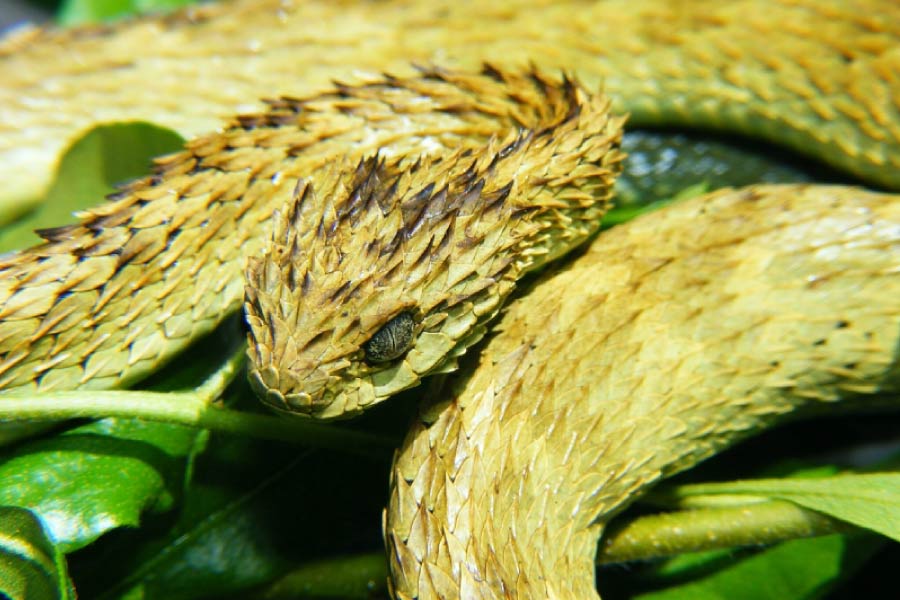
Scientific name: Atheris hispida
Family: Viperidae
Continent: Africa
IUCN conservation status: Least Concern
Description: Looking like a dragon from a fantasy film, the spiny bush viper has a striking appearance, with keeled, spiny scales running along the length of its body. Also known as the hairy bush viper, the snake is arboreal and feeds primarily on small mammals, birds, and lizards. A bite from this weird reptile can be fatal to humans, too.
Discover More With Active Wild
You can see more African reptiles on this page: African Reptiles
You can find out more about snakes on this page: Snake Facts
Discover different types of snakes on this page: Types of Snakes
Tentacled Snake
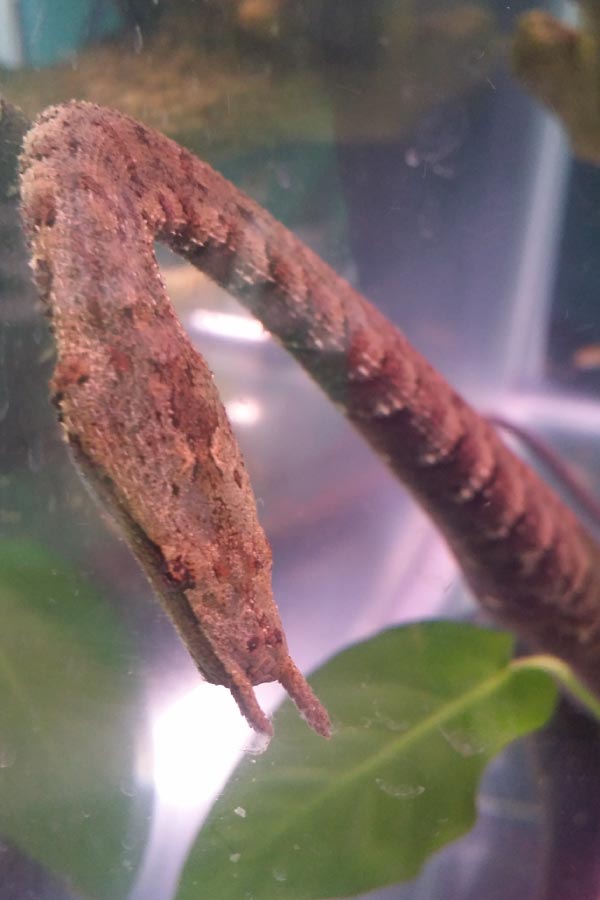
Scientific name: Erpeton tentaculatum
Family: Homalopsidae
Continent: Asia (specifically, Southeast Asia)
IUCN conservation status: Least Concern
Description: Found in slow-moving bodies of freshwater in Southeast Asia, this strange aquatic snake has two unique, fleshy tentacles on its snout. These tentacles are thought to able to sense movement, helping the snake capture its prey, which consists mainly of fish.
Discover More With Active Wild
You can see more Asian animals on this page: Asian Animals
You can find out more about snakes on this page: Snake Facts
Discover different types of snakes on this page: Types of Snakes
Thorny Devil
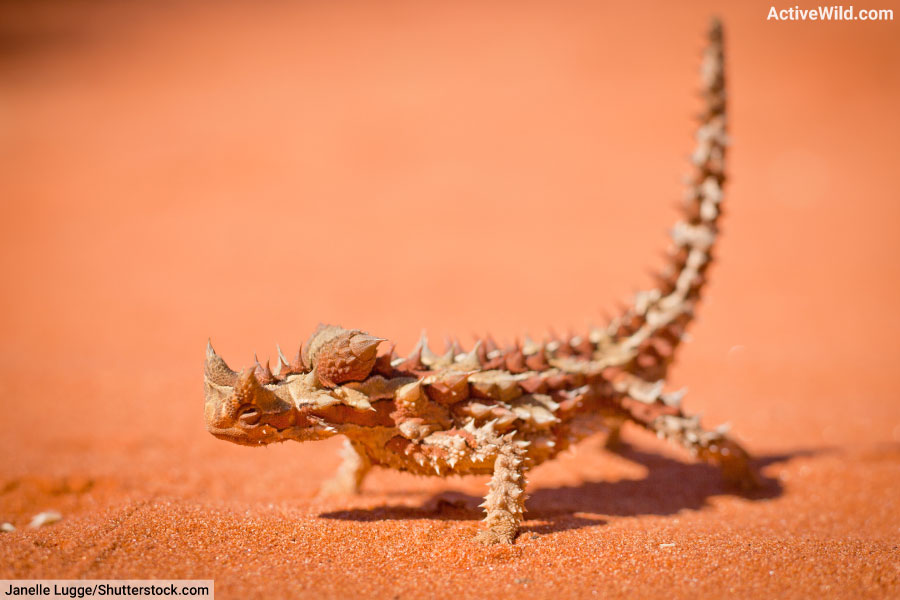
Scientific name: Moloch horridus
Family: Agamidae
Continent: Australia
IUCN conservation status: Least Concern
Description: This weird Australian lizard is known for its distinctive appearance, having horns, an array of sharp spines, and a spiky “false head” on its neck – an adaptation to confuse predators. It primarily feeds on ants, consuming thousands in a single day.
Discover More With Active Wild
Discover different types of lizards on this page: Types of Lizards
You can see more Australian reptiles on this page: Australian Reptiles
Discover More With Active Wild
You can see more weird species on the following pages:
Weird Animals Pictures & Facts
Weird Birds Pictures & Facts
Weird Fish Pictures & Facts
Weird Insects Pictures & Facts
Weird Mammals Pictures & Facts
Weird Sea Creatures Pictures & Facts
Weird Plants Pictures & Facts
Ugly Animals Pictures & Facts

